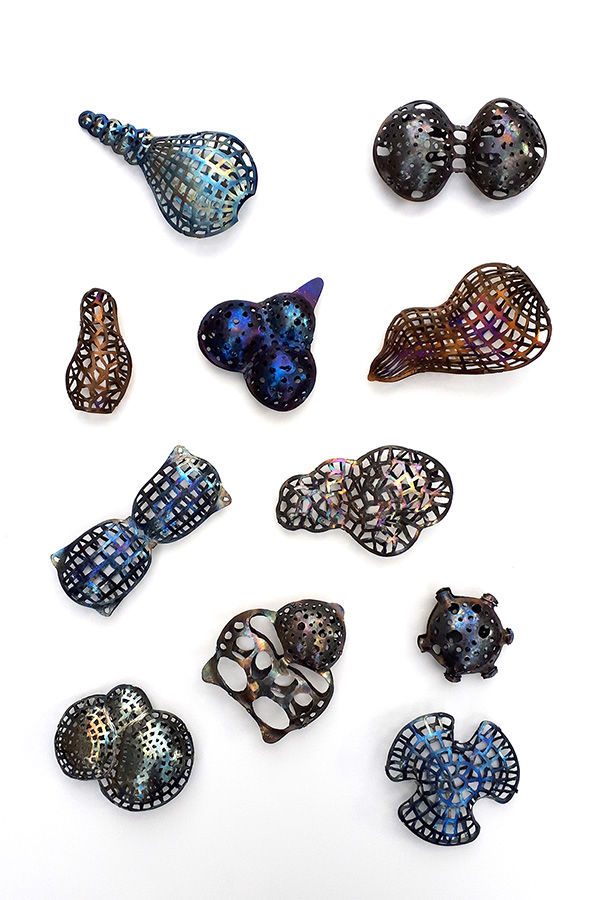The first time I saw the sea, I was 18 years old. I had just gotten my driving licence, and took off for the ferry over the Gulf of Bothnia, to Finland. Coming from the realm of trees, the inland of Sweden, and experience the unbroken horizon was the most memorable impression. Like the water had no end. Now I live on the west coast of Sweden. My partner, who is born here, does not consider the Gulf of Bothnia as the sea because it is brackish water. There are hierarchies in water, too (sic!). But living on the coast with the sea so close, you get very aware of nature and climate. It affects you directly. The wind, the rain, the fog, the salty smell – coming and going.
The drawings of radiolarians made by scientist Ernest Haeckel published in the book Art Forms from the Ocean, The Radiolarian Atlas of 1862 have amazed me, and I often come back to these drawings, not only the fantastic organisms but the drawings themselves. The scientist’s urge to both explore and document at the same time. To observe and analyse through your mind and to recreate through your hand. Motoric skills that were trained by explorers and researchers as it was the only way to document their discoveries. Drawing, depicting an object is a very good way to understand its form, you are forced to simplify to make the image understandable. This simplification cannot be reached within a photo, and many times the drawings are better for provide information. Haeckel made his drawings with this intention and with great love for these organisms.
Plankton are the smallest organisms in the sea and the most important categories in the food chain. Not only directly, by keeping the world’s largest animal, the Blue Whale, replete, but by being eaten by creatures that are being eaten by creatures that are being eaten etc.
Some are one-celled organisms, like the dinoflagellates that are plant plankton, or radiolarians that are zooplankton, called Protozoa.
The name Protozoa means “the first animal” in Greek.

